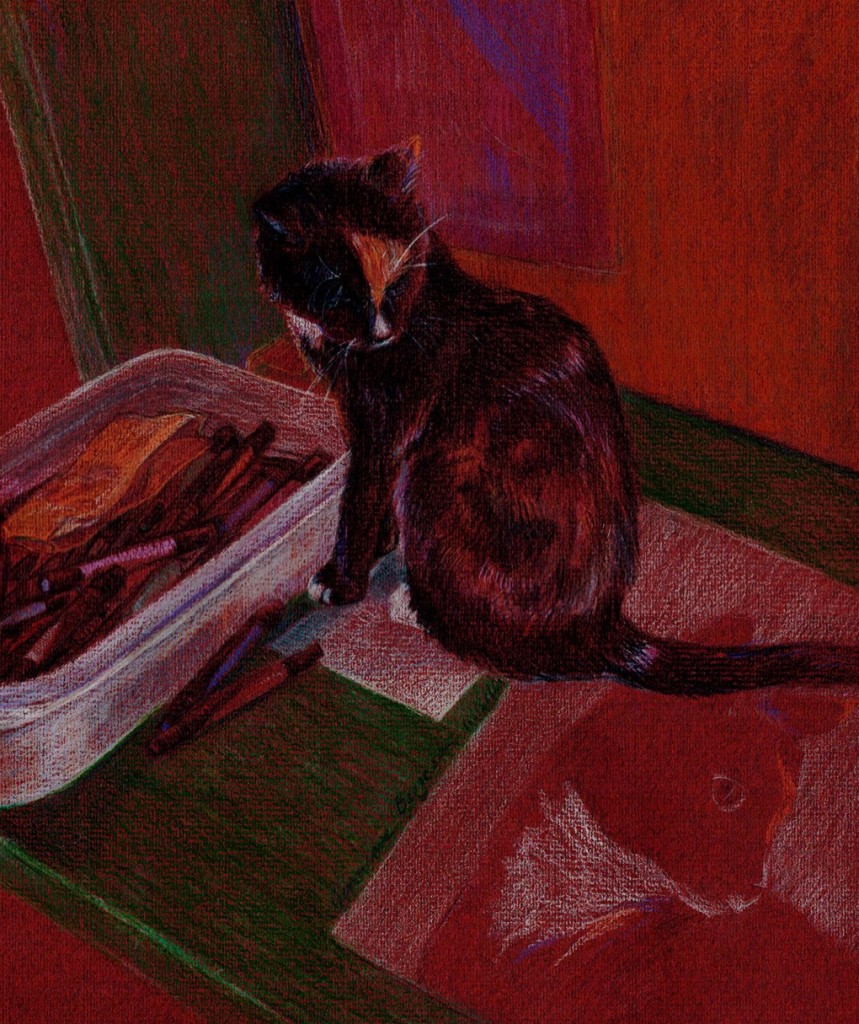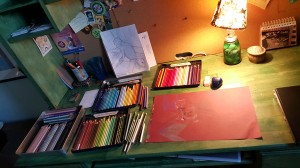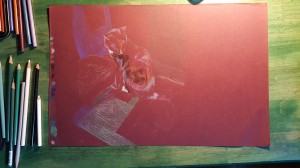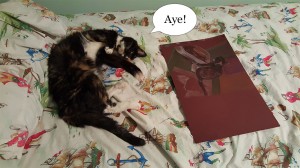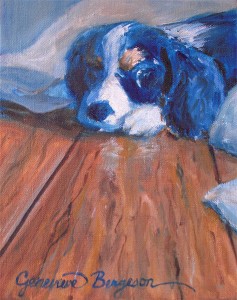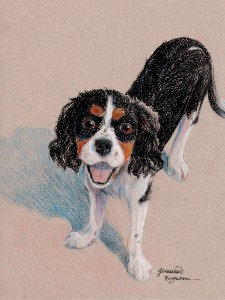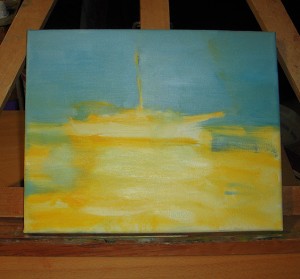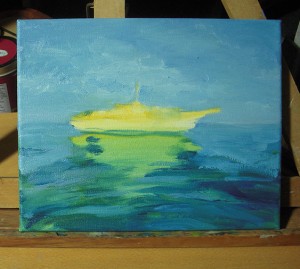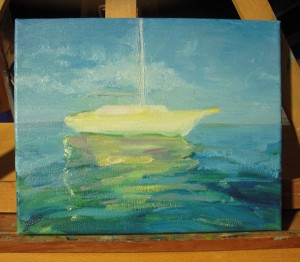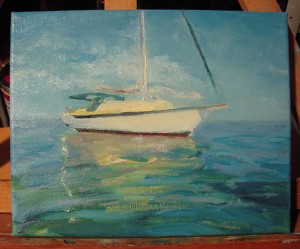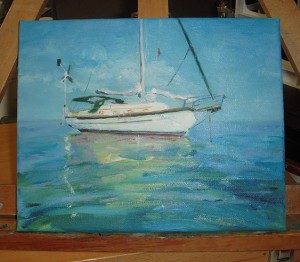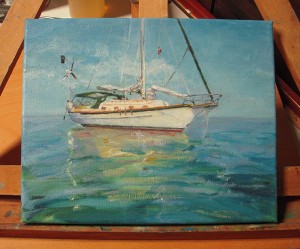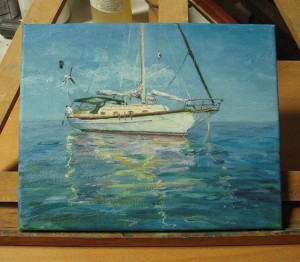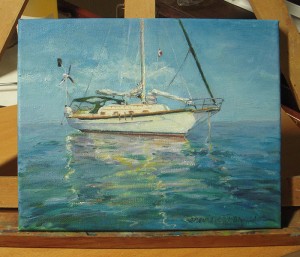A little over a week ago, I was visiting my great-uncle (the one who designed the Moran tugboats I painted), and he more or less bequeathed to me several large, old wooden frames, if I thought I could use them. Wooden frames covered in blue-green mildew.
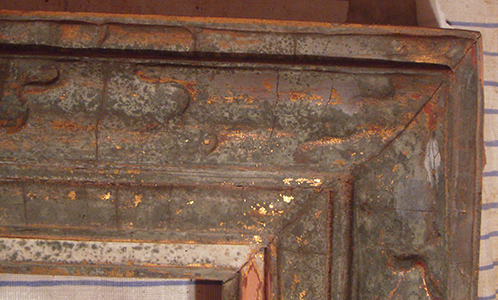
What would you think?
I thought, “Yes!” Frames are expensive, and with a lot of care and clean-up these could look very nice again. And I can do that work. It’s a lot of work, but very doable. I started with the biggest, most textured frame, and it’s cleaning up slowly but nicely. You can see the original shiny finish.
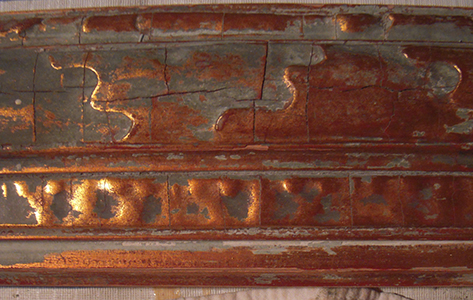
So if you find yourself with old, mildewed frames to clean, rather than chuck them, here are some restoration tips:
1. Sand, man. Get a good rough grit (60 or 80). If your frame is flat, you can use a hand-sander. If it’s grooved, rounded, or textured, you’ll have to sand by hand. (It’s helpful to set the frame up on horses.) Once you get the brunt off, you can switch to a finer grade for smoothing (120 or higher).
2. Ay, there’s the rub. Get an old rag, dab it with rubbing (isopropyl) alcohol and wipe the mold off. More vigorous rubbing is required the more mold there is. You can also pour the alcohol right on the frame and let it soak thirty seconds. Use cotton swabs or Q-tips for small and detailed areas.
3. Bleach. Some people mix water, bleach, and dish detergents and rub, but you have to be careful of proportions so you don’t change the color of the frame. Others dunk the frames in a bucket of the solution, but my frames are too big for that. I have not tested this method, so I don’t know how well it works.
4. Sand some more!
5. Plaster. If there are lots of cracks (especially found on older, ornate frames) and you don’t want the frame to have too much character, you can spread plaster or putty to fill the cracks. Then smooth everything by sanding and, once the plaster dries, proceed to tip 6.
6. Paint it. Once you’ve thoroughly cleaned the frame, repaint it. Metallic paints provide a classic finish. When done, make sure you put a picture in it!

